Hygiene is always important, but germs are especially risky in makeup artistry. Unfortunately, not all artists are as careful with as they should be. Some people don’t even realize how unsanitary their habits are!
Can you read these scenarios without cringing? If so, you might have some bad makeup hygiene habits!
Some people don’t wash their hands!
Picture this: A makeup artist grabs lunch before her appointment. She eats onion soup, licking her fingers. She pays with cash, digging out bills and coins. She smokes a cigarette and hops on the bus. When she gets to her appointment she immediately uses her hands to apply moisturizer.
Why you should cringe: Besides germs from money and the bus, she licked her fingers and touched cigarettes. By not washing her hands, she exposes her client to mystery bacteria, her own germs, and chemicals from her cigarette.
What she should have done: Always wash your hands before starting! Let your client see you use the sink or hand sanitizer so they feel at ease when you touch their face.
Some people blow on their brushes!
Picture this: The makeup artist applies face powder to set the foundation. There’s too much powder on the brush, so she blows some off with her mouth.
Why you should cringe: She ate onion soup and eggs, then smoked a cigarette. That’s not a very pleasant combination near your client’s face! Blowing on your brushes also transfers saliva and airborne bacteria, which you transfer to their skin.
What she should have done: Remove excess powder by tapping the brush on your wrist or the back of your hand.
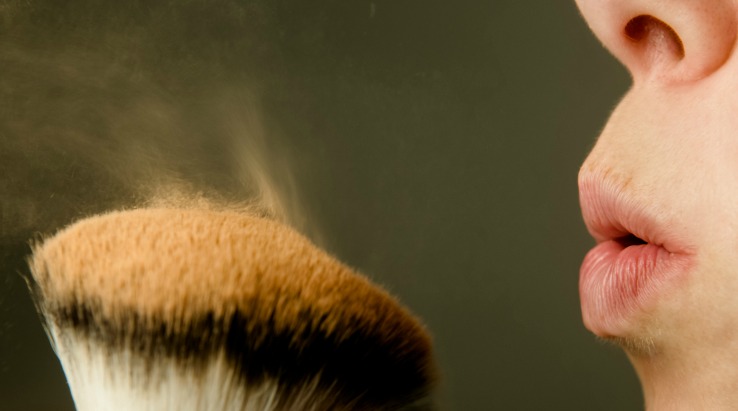
Some people don’t use disposable spoolies!
Picture this: The makeup artist grabs her favorite mascara and uses the wand in the lid. She loves this stuff, so she uses it on all of her clients and herself.
Why you should cringe: Eye makeup is one of the biggest bacterial culprits. Using the built-in wand contaminates it and the mascara in the tube. Double dipping with the wand or a disposable spoolie, even once, ruins the tube.
What she should have done: Always use disposable spoolies and never double dip! One dip with a new spoolie should be enough. If not, throw it out and grab a new one!
Some people double dip in cream makeup!
Picture this: The makeup artist is using colored creams. She switches brushes between colors so she doesn’t mix shades, but she double dips each color so she doesn’t run out of brushes.
Why you should cringe: The second the brush touches the client’s face, it picks up bacteria. Because of its consistency, bacteria can’t be cleaned from cream makeup. It is contaminated and using it on a different client, even with a clean brush, risks infection.
What she should have done: Always bring a clean palette and palette knife. Scrape creams onto the palette and dip from there. The compact shouldn’t come in contact with the client or the brush.
Some people reuse sponges!
Picture this: The makeup artist uses a regular drug store makeup sponge to blend the client’s foundation. She has another appointment, so she saves the sponge to use again. No point in wasting!
Why you should cringe: Regular makeup sponges are made to be used then thrown away! Bacteria contaminate sponges when they touch the client’s skin. Using them again, on that client or someone else, risks infection.
What she should have done: Always throw regular sponges out. Invest in a better quality microbial resistant foam sponge for a more eco-friendly option. These are designed for reuse as long as you sanitize them between clients. Even these need replacing eventually!
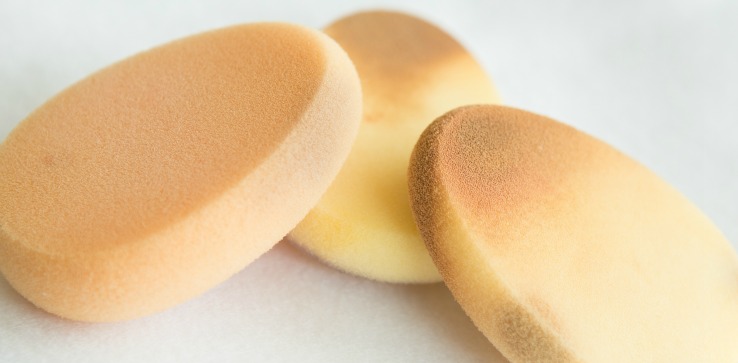
Some people don’t clean their brushes!
Picture this: The makeup artist goes from one appointment to another. She wipes makeup from her brushes with a towel and starts the second client.
Why you should cringe: Brushes hold and transfer bacteria until they’re properly sanitized. The second client might contract anything from a cold or flu to cold sores or pink eye!
What she should have done: Your client would probably rather you take time to sanitize the brushes than expose them to someone else’s bacteria. If necessary, carry a spare set of clean brushes in your kit.
Some people forget to clean their products!
Picture this: The makeup artist cleans her brushes but the second client still contracts a skin infection.
Why you should cringe: The culprit is her makeup! She double dipped or didn’t clean her products. Bacteria from the first client would still be on the makeup itself.
What she should have done: Each product should be sanitized between clients. We’ve talked about cream makeup and mascara, which can’t be sanitized. What about other products?
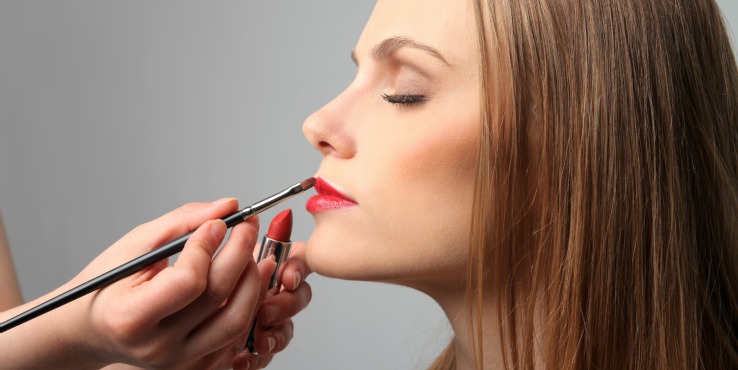
- Lipstick: Touching clients with lipstick contaminates it. Scrape some onto your palette and use a lip brush.
- Pressed powders: Sanitize pressed blush, face powder, and eye shadow by spraying them with 99% isopropyl alcohol to kill bacteria sitting on the surface.
- Loose powders: Loose powders can’t be sanitized because bacteria contaminates the entire product. Scoop some onto your palette instead.
- Eye and lip pencils: Sharpening pencils shaves off the contaminated outer layer.
- Eyeliners: Scrape cream liners onto your palette. The tips of liquid liner pens can be sanitized, but the kind that contracts when you replace the lid contaminates the liquid inside. Water activated liners are safe to sanitize on the surface with 99% isopropyl alcohol.
Some people don’t think to clean their makeup bags!
Picture this: The makeup artist arrives with her tools and products sanitized but the client sees that her bags and brush roll are covered in powder and smudges.
Why you should cringe: When anything unsanitary makes contact with your bag, it becomes unsanitary as well. Messy kits look unprofessional.
What she should have done: Between clients, wipe your kit with antibacterial wipes.
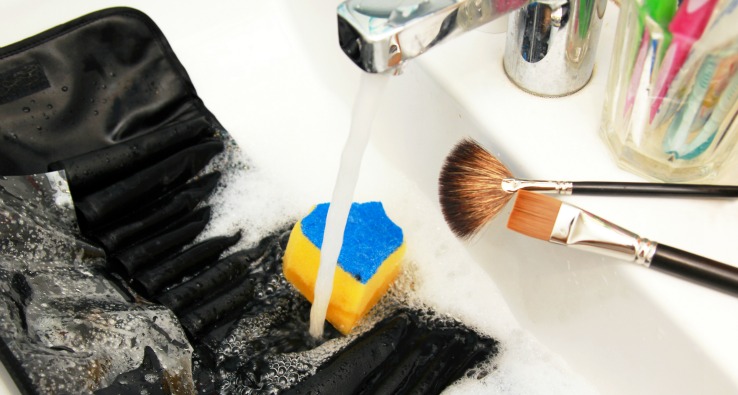
Some people use testers and borrow makeup
Picture this: A friend invites you over before a party. You stop for new lip gloss. You can’t decide which one you like, so you try different shades on your lips. At your friend’s house, you touch up your waterline with her liner.
Why you should cringe: You could wake up with a skin infection or worse! Your friend might not clean her makeup well or might not have told you that she’s been sick. Unhygienic testers are also largest source of makeup-related infection!
What you should have done: Don’t borrow makeup! If you must test a product color, do it on your hand and remove it with antibacterial wipes. Ask for help with foundations. Sample a clean bottle with a sponge so your skin never comes in contact with the tester.
Keep it clean!
Bad makeup hygiene is a risk to your clients and your professional reputation. Letting bacteria collect also damages your supplies. Great hygiene takes time but it’s worth avoiding conjunctivitis!
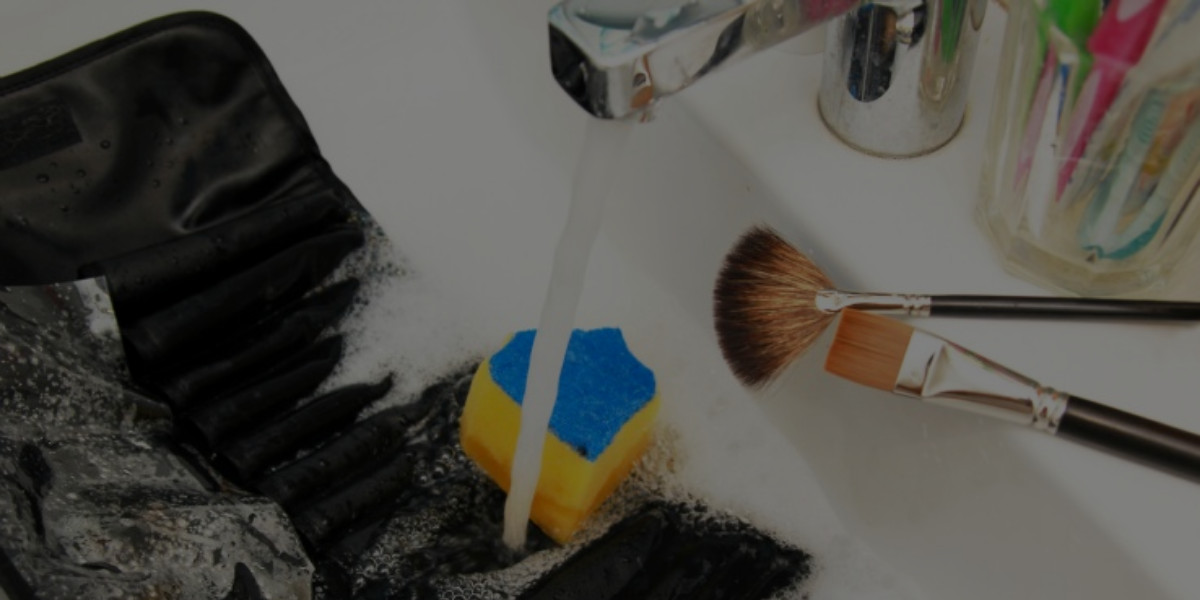
I found this article usefull
I find that in America particularly, using disposable spoolies for mascara is the only way to go and everything else is a big no-no, if you are an MUA.
I was therefore so surprised to find that none of the teachers encouraged us to use spoolies for mascara, when I went to make-up artist school in London.
All the teachers were very succesful and had been assisting renowned MUAs such as Charlotte Tilbury, Mary Greenwell, Val Garland, Lisa Eldridge and many more at big fashion shows.
One teacher who had assisted Pat McGrath, she told me that McGrath would tell off if you used a disposal spooly to apply the mascara at a fashion show, instead of the actual mascara wand.
McGrath’s reason being that it’s not only the mascara, the brush too does a big part of the job. (of course, I wasn’t there myself to hear it from McGrath herself, so I don’t know the genuineness of the claim)
We were therefore told, if the model had had an eye infection within the past two weeks, we should use spoolies or throw out the mascara after use.
If that wasn’t the case, we were told to sanitize the mascara properly, spray the wand with alcohol and wipe it, spray again and wipe, in between dipping and after use.
I have used this method myself and I’ve never had a case of infecting a models or a clients eyes with mascara before, neither have I had clients questioning my hygiene standards.
I’ve always carried spoolies in my kit for those who demanded mascara applied with a spooly.
However, I’ve had other MUAs criticizing me for this method when I’ve discussed work and hygiene online.
I’m curious if there are other makeup artists out there who shares the same opinion as Pat McGrath apparently does.
“Pressed powders: Sanitize pressed blush, face powder, and eye shadow by spraying them with 99% isopropyl alcohol to kill bacteria sitting on the surface.”
You’re actually supposed to use 70%, 90% tries too fast to actually disinfect.
“Eye and lip pencils: Sharpening pencils shaves off the contaminated outer layer.”
1. Yes sharpening does that, but after you should spray them with 70% isopropyl alcohol just as a precaution. 2. You are supposed to also clean and sanitize the sharpener before and after sharpening any pencils.
I am no practicing makeup artist (yet), but aspire too be and have done lots of research on the topic. The specific information I supplied came from a practicing makeup artist (not a beauty guru).
I would think you can remove the mascara from the tube place it on a pallet and then apply washing the wand and sanitizing it before putting it back in??